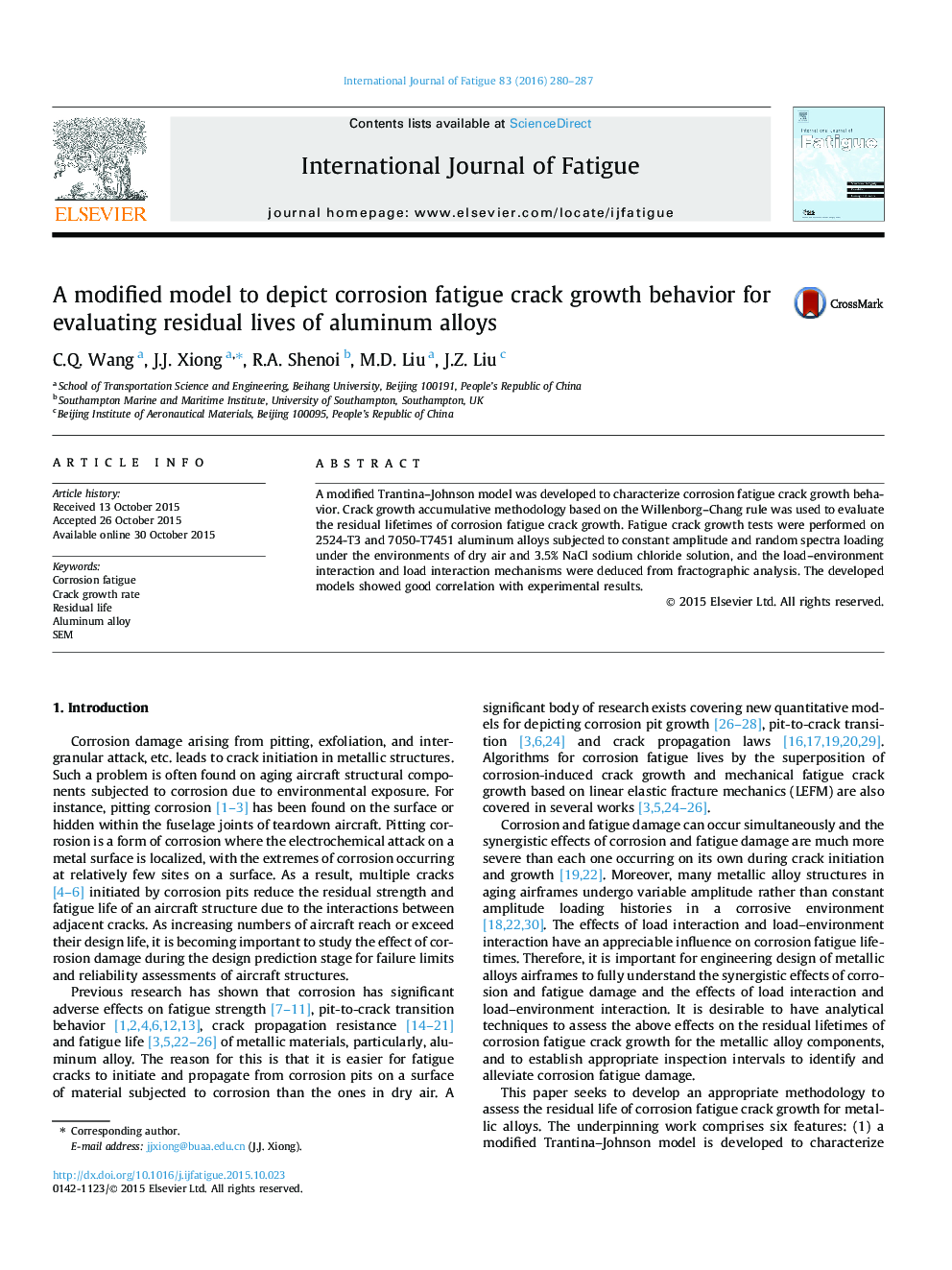| کد مقاله | کد نشریه | سال انتشار | مقاله انگلیسی | نسخه تمام متن |
|---|---|---|---|---|
| 774872 | 1463746 | 2016 | 8 صفحه PDF | دانلود رایگان |
• A modified Trantina–Johnson model is developed to characterize corrosion fatigue crack growth behavior.
• Crack growth accumulative methodology based on the Willenborg–Chang rule is used to evaluate the residual lifetimes.
• Fatigue crack growth tests are performed on 2524-T3 and 7050-T7451 aluminum alloys subjected to constant amplitude and random spectra loading under the environments of dry air and 3.5% NaCl sodium chloride solution.
• The load–environment interaction and load interaction mechanisms were deduced from fractography.
• The developed models show good correlation with experimental results.
A modified Trantina–Johnson model was developed to characterize corrosion fatigue crack growth behavior. Crack growth accumulative methodology based on the Willenborg–Chang rule was used to evaluate the residual lifetimes of corrosion fatigue crack growth. Fatigue crack growth tests were performed on 2524-T3 and 7050-T7451 aluminum alloys subjected to constant amplitude and random spectra loading under the environments of dry air and 3.5% NaCl sodium chloride solution, and the load–environment interaction and load interaction mechanisms were deduced from fractographic analysis. The developed models showed good correlation with experimental results.
Journal: International Journal of Fatigue - Volume 83, Part 2, February 2016, Pages 280–287
